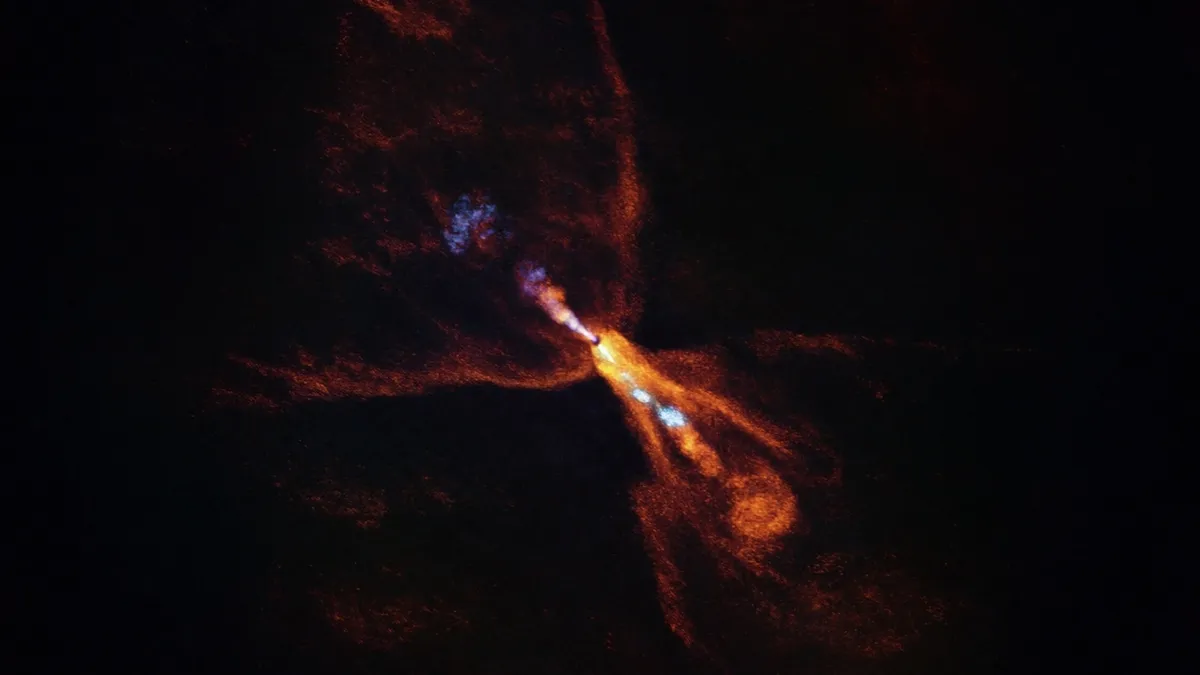
A groundbreaking discovery has been made by astronomers who have witnessed the birth of a solar system beyond our own for the very first time. An international team of researchers has successfully pinpointed the exact moment when planets began to form around a star. This remarkable achievement was made possible through the utilization of data captured by the ALMA telescope in Chile and the James Webb Space Telescope, with findings published in a recent study in Nature.
The researchers observed hot minerals that are just beginning to solidify, marking the first specks of planet-forming material. According to the study, a gaseous disk surrounding the young star represents the initial stages of the assembly process for a new planetary system. "For the first time, we have identified the earliest moment when planet formation is initiated around a star other than our Sun," stated Melissa McClure, a professor at Leiden University in the Netherlands and the lead author of the study, in a statement released by the European Southern Observatory (ESO).
Astronomers hypothesize that planets and small bodies, akin to those in our solar system, likely formed through a mixture of interstellar solids with rocky materials that condense from the hot gases surrounding a young host star. However, the specific process behind our solar system's formation is still not entirely understood. Notably, the first solid materials to condense near Earth's present location, orbiting the Sun, are found trapped within ancient meteorites, according to the ESO.
Over time, the newly condensed solids combine and initiate the planet formation process, increasing both in size and mass. Researchers found evidence indicating that these hot minerals have begun to condense in the disc surrounding the young star, or protostar, named HOPS-315. Edwin Bergin, an astronomer at the University of Michigan and co-author of the paper, emphasized that this process has never been observed before in a protoplanetary disc or anywhere outside our solar system.
The protostar HOPS-315 is located in the Orion B molecular cloud, approximately 1,300 light-years from Earth. Its position allows for a direct view of its inner gaseous disk, which is a rare occurrence since jets of gas emitted by protostars, known as outflow, often obscure the view of the disk. By employing infrared and millimeter wavelengths from both ground-based and space-based telescopes, astronomers were able to observe solids beginning to condense from the cooling gas—referred to as "time zero" for planet formation.
The James Webb Space Telescope, the most powerful telescope ever launched, played a critical role in probing the chemical makeup of the material surrounding the protostar. It detected crystalline silicate materials, which are a key indicator of early planet formation. According to the paper, the chemical signals appear to originate from a small region of the disc around the star, equivalent to the orbit of the asteroid belt in our own solar system.
This discovery marks the first time a planetary system has been identified at such an early stage in its formation. While astronomers have previously observed young discs containing massive planets like Jupiter, it was not until now that it was proven that the initial solid parts of nascent planets, known as planetesimals, must form at earlier stages in time. "The finding opens a window into the past of our own solar system," McClure noted, as the formation process of this new system likely mirrors the conditions that existed at the dawn of the planetary system that harbors Earth.